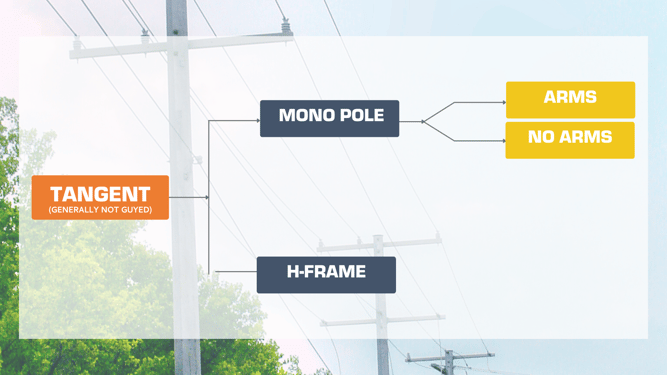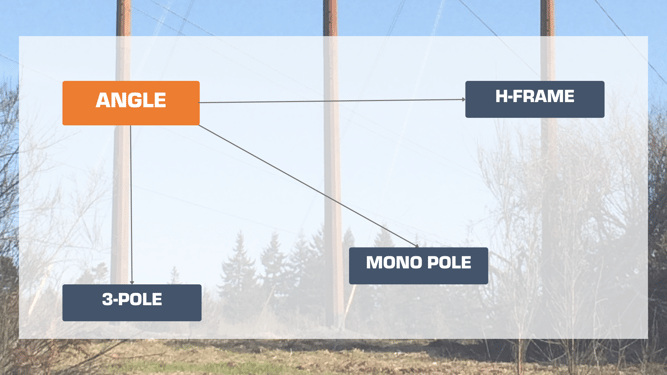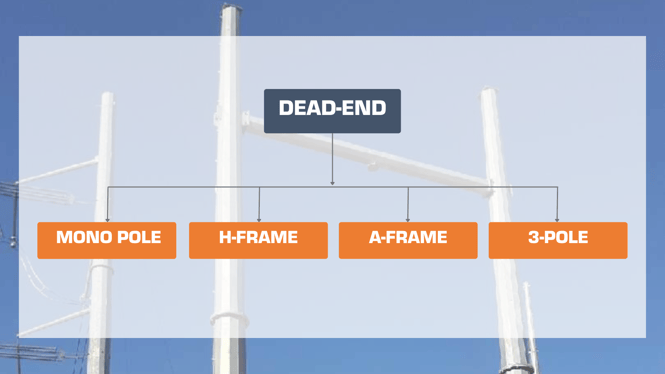It’s not as simple as saying “ok, I want self-supporting tangent mono poles with delta configuration for my entire 80-mile stretch.” While that idea might be more economical than having h-frame or 3-pole structures, it’s just not practical.
Ultimately, the wire configurations determine which type of structure will be used, and typically there will be a mix of these structures in order to follow the right-of-way through small or tight turns. Right-of-ways go alongside or through interstates, highways, fields, woods, and even water, so an engineer must keep all these situations in mind when designing.
Three common transmission structures:
Tangent
-
- Used when transmission route is straight
- Generally, no longitudinal loads on the structure

Angle
-
- Used when transmission route changes direction
- Used from anywhere less than a 5-degree angle to a 90-degree angle

Dead-End
-
- As the name applies, dead-ends are designed to take the full component of every wire's tension
- Does not necessarily mean the end of transmission line

Whether the structures are tangent, angle or dead-end, wire phases can run in multiple configurations. Horizontal Configurations provide the lowest profile. Vertical Configurations require the minimum width right-of-way. And Delta Configurations is an attempt to use the value of both horizontal and vertical configurations to maintain phase clearances.
Transmission structures can be classified as either self-supporting or guyed.
Self-supporting structures do not use guys: meaning they are not tied to the ground or any other structure in a way that offers additional support. They are better for restrictions to right-of-ways and tend to have loads small enough to not warrant guys.
Guying of structures is used to support the structure and allow for a more economical design in both the steel structure and foundation. Guying reduces bending and deflection. However, the downside is that it requires more right-of-way.
*Here are some main contributing factors to keep in mind when deciding on whether or not to guy a structure:
- Structural loading
- Right-of-way requirements
- Aesthetic design criteria
**Here are some other contributing factors you may want to consider:
- Line voltage
- Electric air gap clearance requirements
- Ground clearance requirequirements
- Insulation requirements
- Number of circuits to be supported
- Electric and magnetic field limits
There is so much to learn about Transmission Structures. What questions do you have? We would love to hear from you so please leave a comment below.
